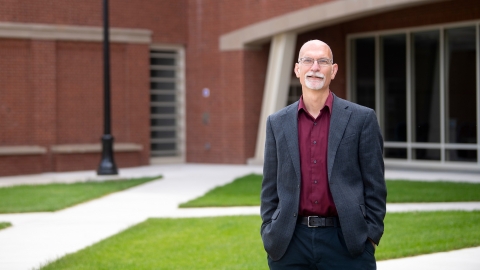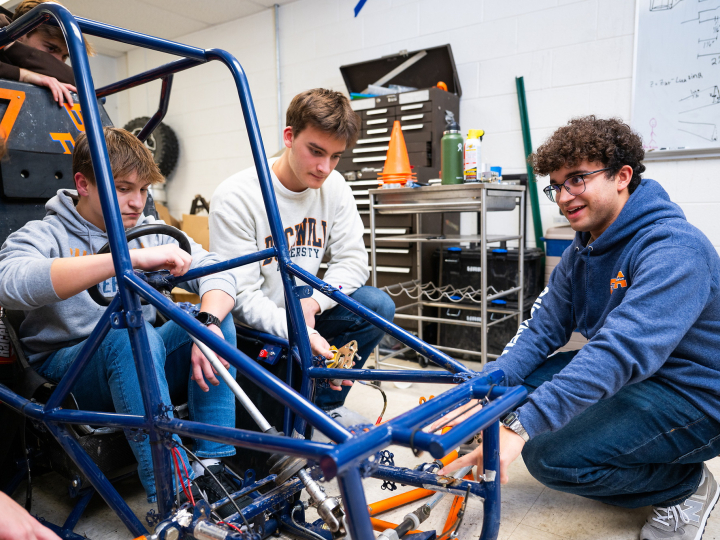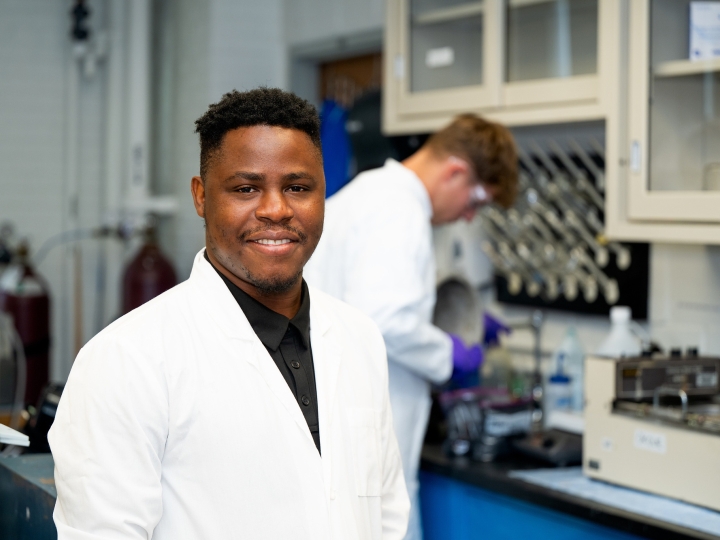
Baish Collaborates on Research to Improve Cancer Tumor Treatment Outcomes
May 19, 2022
Professor Professor James Baish, biomedical engineering, has been doing research in hopes of improving cancer tumor treatment outcomes. Photo by Emily Paine, Communications
A Bucknell biomedical engineering professor is part of an international research team working to make chemotherapy more effective for cancer patients. The researchers have used mathematical modeling on preclinical data to show that nanomedicine and metronomic therapy can improve the efficacy of chemotherapy treatment on cancer tumors.
Professor James Baish joined authors from the Cancer Biophysics Laboratory at the University of Cyprus, and Massachusetts General Hospital/Harvard Medical School on the research. They published a recent paper in the Journal of Controlled Release.
In the paper, they write that nanomedicine offers hope for improving the treatment of cancer, while metronomic therapy — defined as the frequent, low dose administration of chemotherapeutics — is being tested in clinical trials as an alternative to a maximum tolerated dose chemotherapy schedule.
"The nanoparticles are carrying a chemo drug, but it's a different way of getting it there," Baish says. "Metronomic therapy is the idea that instead of hitting a patient with as much chemo as they can tolerate [maximum tolerated dose], you're giving them roughly the same total dose but at shorter intervals and smaller doses more regularly. The nanoparticle delivery also seems to have that effect on the time release of things, so you're getting more of a trickle of the drug being delivered rather than the intermittent maximum tolerated dose."
The researchers employed their mathematical model on data from the use of nanomedicine and metronomic therapy on tumors in mice. They conclude that both approaches can be more effective strategies to enhance tumor treatments. The treatments were found to improve the tumor perfusion (passage of fluid through the lymphatic system or blood vessels), tissue oxygenation and drug delivery, and activation of the immune system.
"Both approaches seem to have some real potential benefit," Baish says. "In preclinical [mouse] models, they seem to improve the ability of the blood vessels to deliver the drug."
In most tumors, abnormal blood vessels are an inhibitor to drug delivery, according to Baish. By normalizing the blood vessels to make them more effective at carrying medication, the delivery and effectiveness of the chemotherapy seems to be improved. The team's research has found both the metronomic and nanoparticle delivery are doing just that.
"If you normalize the blood vessels a bit and simultaneously use those blood vessels to deliver drugs, then your therapy will work better," Baish says. "This is not a story of a new drug, but of different ways of timing the dosing so that the existing drugs have the potential to be more effective."
The researchers have published a series of papers over the last three years documenting the findings on improved tumor treatment from nanomedicine and metronomic therapy. They are hopeful that their results are showing enough promise to soon lead to a clinical study.
"If you get something that's promising enough in mice, it's not unusual that you'd get a start on a Phase 1 clinical study," Baish says. "Phase 1 is not aimed to show that it works, but you very slowly ramp things up to find out if it's safe or not."
The team plans to continue its research in hopes of improving cancer tumor treatment outcomes.

